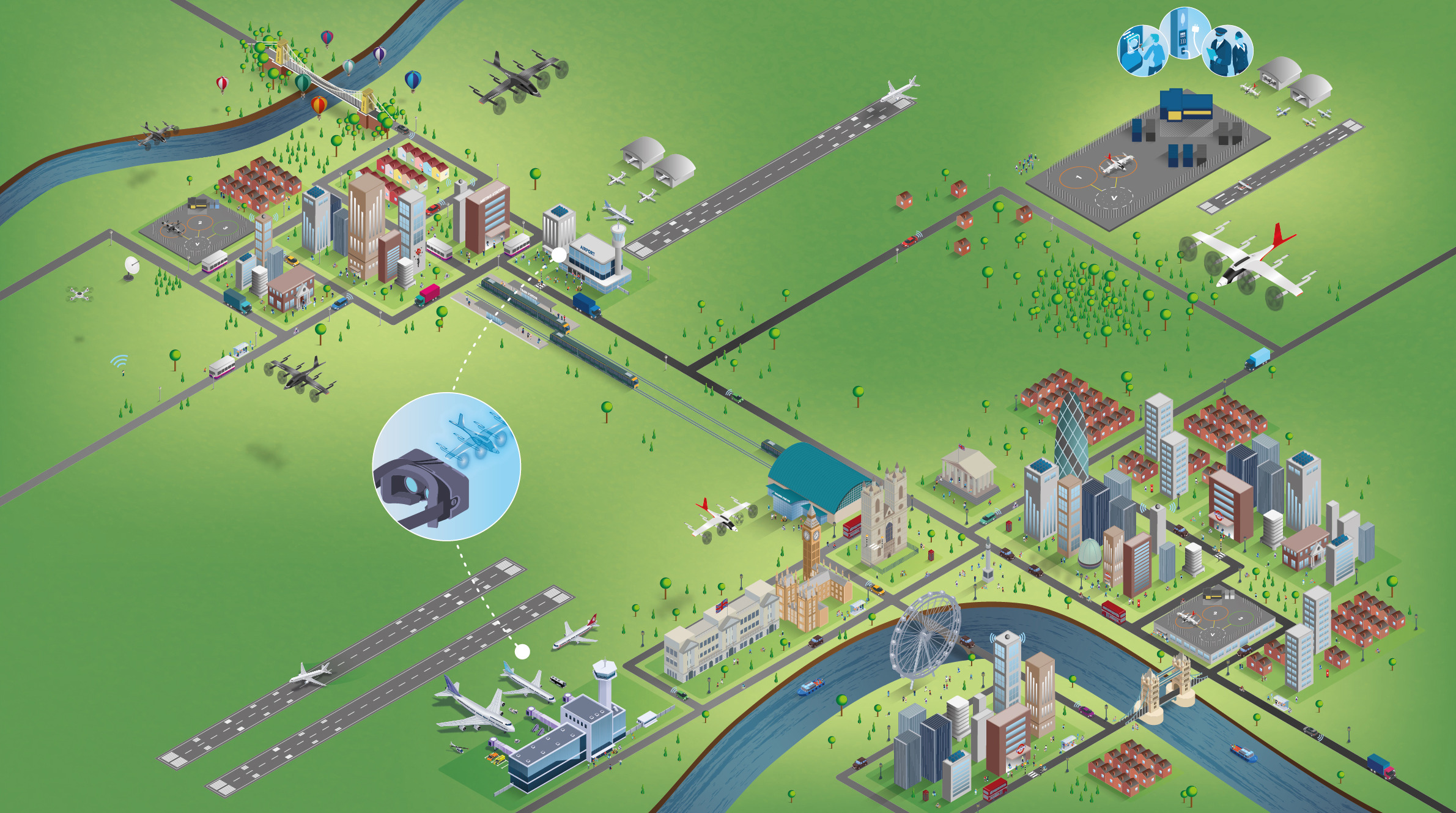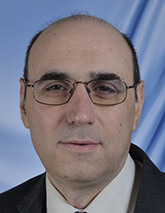Bringing the vision of advanced air mobility closer to reality
23/07/2024

Experts at Cranfield University led by Professor Antonios Tsourdos, Head of the Autonomous and Cyber-Physical Systems Centre, are part of the Air Mobility Ecosystem Consortium (AMEC), which aims to demonstrate the commercial and operational viability of Advanced Air Mobility (AAM) in the UK. Professor Tsourdos explains more about Cranfield’s involvement:
Collaborating with AMEC partners, Cranfield is helping to model infrastructure for vertiports, including schedule optimisation and resource management.
Working with Skyports, Cranfield brings its expertise in passenger behaviour research and airport management to help shape infrastructure requirements for landing pads and vertiports. Ensuring that this is highly integrated with supporting infrastructure such as aircraft parking, landside access and embarking and disembarking areas is key to ensuring efficiency and a positive customer experience.
Cranfield is also supporting NATS in the development of the future airspace concept of operations. Collaborating closely with the consortium, academics are developing networks topology and network efficiencies for a network of vertiports. This is absolutely crucial for airspace management, and it’s key to consider operational constraints such as aircraft capabilities. Getting safety, task allocation and network integration right will ensure that aircraft can fly seamlessly between vertiports.
An ongoing focus area of work is ensuring scalability in the network and modelling how the future might look, and ensuring the network and infrastructure can take increased capacity.
Working closely with Skyports and NATS, the University has involved Master’s students who have generated ideas and information as part of their group projects. The engagement with industry through the project has been a fantastic opportunity for students to gain relevant experience.
Talented students on the Advanced Air Mobility Systems Master’s course have been modelling scenarios, conducting feasibility studies and generating ideas to help unlock the full potential of AAM applications. The course modules are also now available through UKRI’s Future Flight Challenge as a more flexible, ‘stackable’ option on Advanced Air Mobility, recognising the demand for skills in this area.
To read more about AMEC’s progress in this area read their full update blog…
Categories & Tags:
Leave a comment on this post:
You might also like…
Screening for FTSE 100 companies on Bloomberg
So you’re researching an index and need some data on its constituent companies? Bloomberg’s Equity Screening tool makes light work of this, not just for the FTSE, but for indices, exchanges and sectors worldwide. Type EQS ...
Accelerating my future: How Cranfield put me on the fast track to automotive safety innovation
Hello! I’m Michaela Kaiser, and I’m thrilled to share my journey studying abroad. I’m from Calgary, Canada, and I recently graduated from Cranfield’s MSc Automotive Engineering course. My path to Cranfield ...
From Myanmar to Cranfield: My path to Renewable Energy
As someone who is passionate about sustainability, my career goal is to build a path in the renewable energy sector. My aspirations comes from the benefits of developing sustainable energy sources and ensuring energy ...
From lifelong dream to circular economy leader: Q&A with Himesha Randeni on the Environmental Management for Business MSc
What does it take to turn a lifelong passion for the planet into a fulfilling and impactful career? For Himesha Randeni, the answer was the Environmental Management for Business MSc at ...
Library services over the Christmas period
Kings Norton Library will be open 24/7 throughout the holiday period as a study space. Library staff will work until 6pm on Friday 19 December and will resume their normal working hours from 9am on ...
From the control tower to Cranfield: My journey to shaping the future of airports
Hi, I’m Karima Lakouz, and this is the new me! I’m a Moroccan full-time student, aiming to graduate in 2026 with an MSc in Airport Planning and Management from Cranfield University. ...







